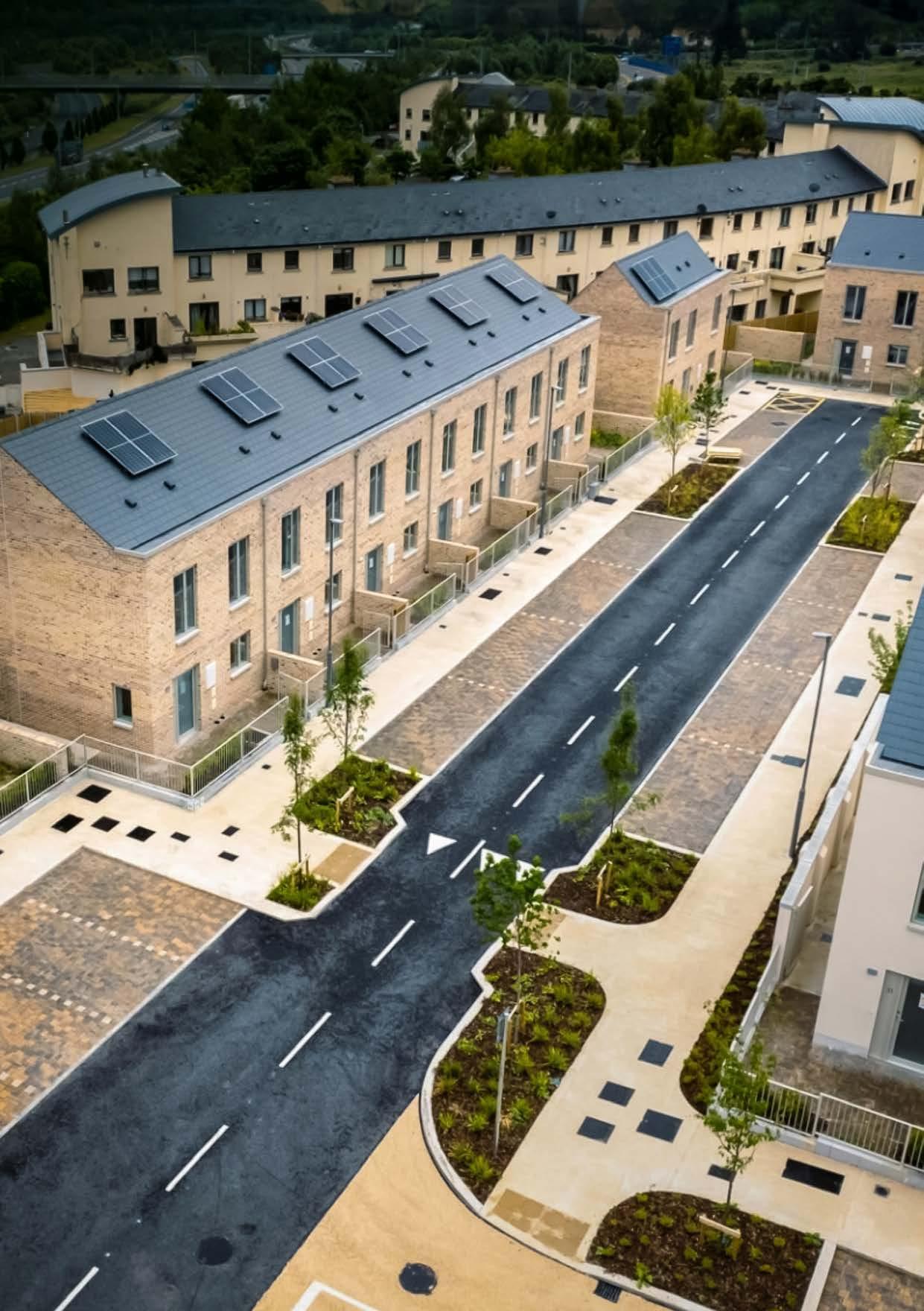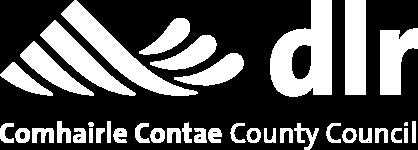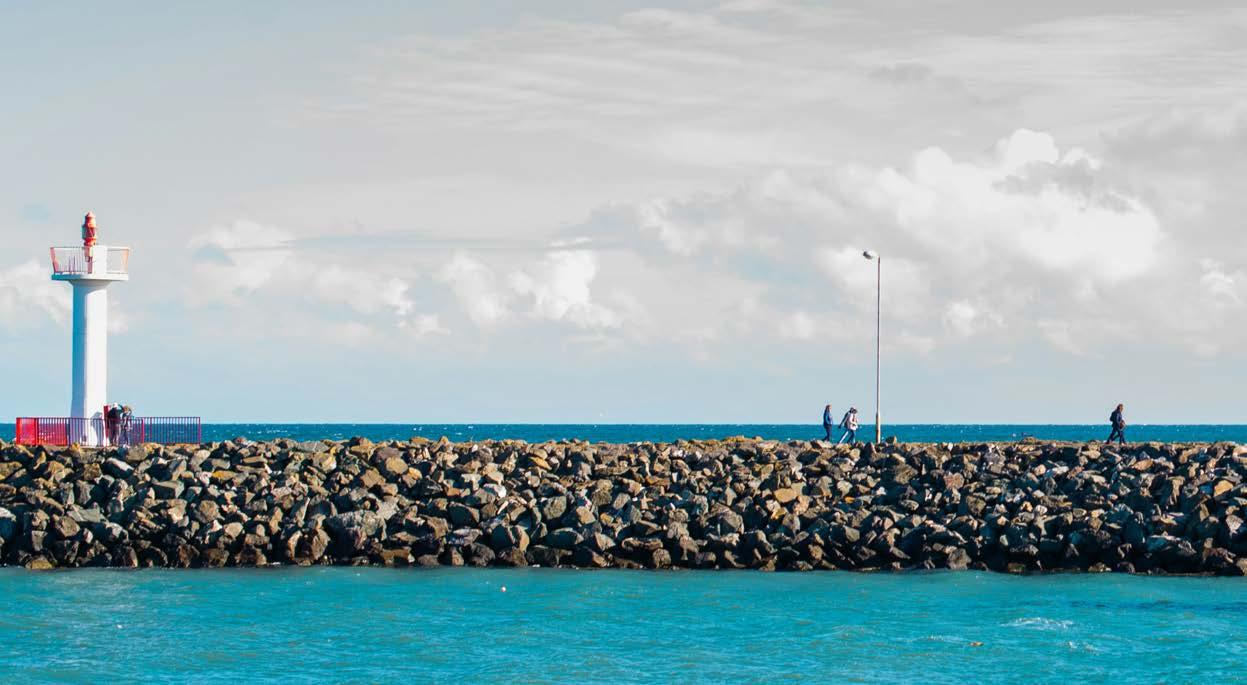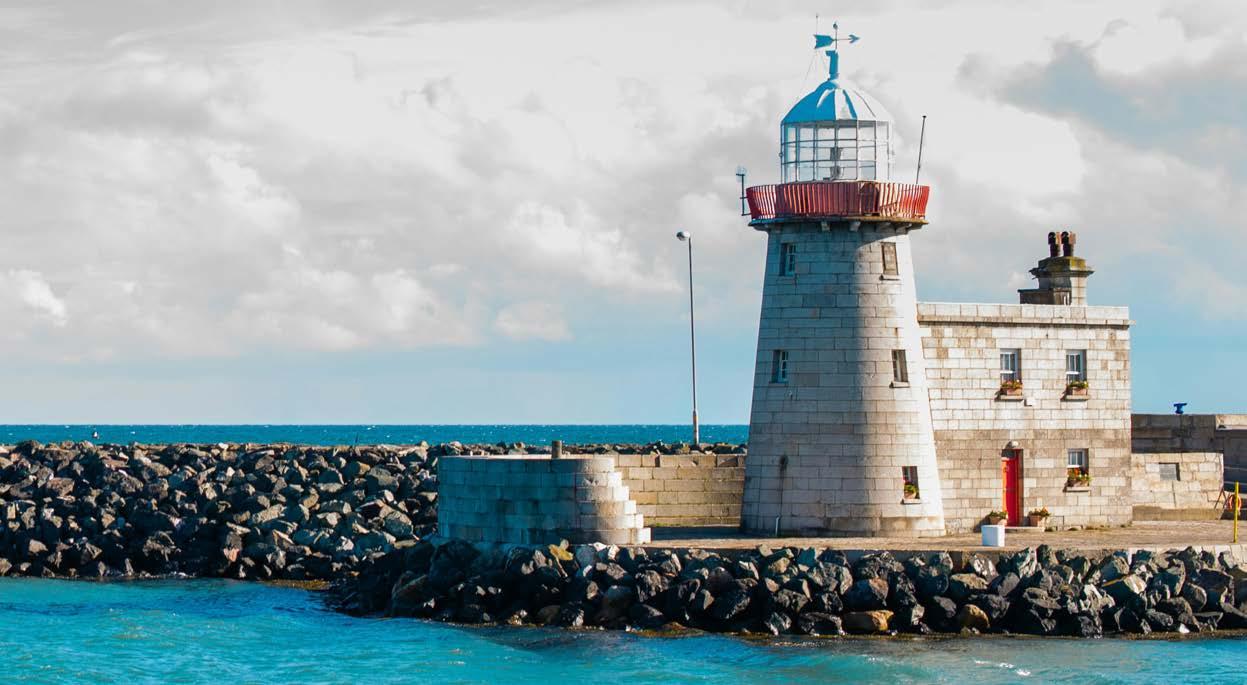
in this issue
L ATEST DUBLIN ECONOMIC DATA
S&P GLOBAL DUBLIN PMI
MASTERCARD SPENDINGPULSE RECESSION AVOIDED? AS ALWAYS, IT DEPENDS ON HOW YOU LOOK AT IT







MARCH 2024 ISSUE 36

Highlights
Dublin’s unemployment rate fell to 4.7% (SA) in Q4 2023, as a new peak employment level of over 800,700 (SA) was reached in the quarter.
Business activity growth slowed to its lowest level of the year in Q4 2023 as services and manufacturing expanded but construction contracted, bringing a sequence of three quarters of expansion to an end.
Growth in the value of consumer retail spending in Dublin remained relatively stable in Q4 2023, with increases of 0.9% QoQ and 3.4% YoY.
Hotel occupancy rates in the Capital recovered to 91% in January 2024, the highest level since the series began in 2014.
Passenger journeys on Dublin's public transport system returned to growth in the final quarter of 2023, as total journeys reached a new record of over 251 million in the year.
Housing commencements and completions in Dublin rose QoQ by 22.5% (non-SA) and 9.3% (SA) respectively in Q4 2023 as upward momentum in the sector was maintained.
Welcome to the March 2024 issue of the dublin economic monitor
The Dublin Economic Monitor is a joint initiative on behalf of the four Dublin Local Authorities, and is designed to be of interest to those living and doing business in Dublin or considering locating here. The report is produced by Grant Thornton with inputs from S&P Global and MasterCard.
There are two special feature articles this quarter, both of which centre on Tourism in Dublin. The first is from Eoghan O’Mara Walsh, CEO of the Irish Tourism Industry Confederation. The second article is by Barry Rogers, Head of the Dublin City Tourism Unit.
The Monitor is divided into the following themes for Dublin:
Economy
Business Developments
Retail Hospitality
Labour Market
International Rankings
Housing Transport & Travel
For more data and insights see: www.dublineconomy.ie
The next edition will be published in June 2024.
Front cover photograph courtesy of Van Dijk Architects
This document provides general information on the Dublin economy. It is not intended to be used as a basis for any particular course of action or as a substitute for financial advice. The document is produced independently by Grant Thornton and Packed.House; the views and opinions expressed are those of the relevant author, and do not necessarily reflect the views of the Dublin Local Authorities. The Dublin Local Authorities disclaim all liability in connection with any action that may be taken in reliance of this document, and for any error, deficiency, flaw or omission contained in it.
Dublin City Council South Dublin County Council Fingal County Council Dún Laoghaire Rathdown County Council
2 // @DCCEconDev www.dublineconomy.ie WELCOME
Recession avoided? As always, it depends on how you look at it
The good news is that the domestic Irish economy continues to grow, despite significant challenges. The not so good news is that the latest EU Commission economic forecast, published in February, has suggested a decline in GDP last year of -1.9%. As we know, the use of GDP in communicating Ireland’s economic performance can be misleading due to the influence of multi-national enterprises. The difference between growth in 2023 for the domestic economy, as measured by Modified Domestic Demand, and a GDP decline is worth unpicking a little.
Due to geopolitical tensions and tight monetary policy, the EU Commission’s reading of the economy is that growth has been slower than originally forecast. The euro area economy experienced a weak second half of 2023, delivering an annual GDP decline of 0.6%. Ireland’s own performance, the EU Commission suggest, was influenced by this broader context, an influence that seems evident through the lens of export performance.
The first estimates for 2023 goods exports from the CSO show that exports were valued at €197 billion, a decrease of 6% or €11.5 billion when compared with 2022. While export sales to Great Britain and the EU27 were up by €413m and €727m respectively, sales to the USA were down 14% or €8.7 billion. Sales to the Rest of World also suffered a significant decline of almost 10% or €3.9 billion. The CSO data reveals that falling sales of chemicals, pharma and computer chips, mainly to the USA were the key drivers of declining exports.
It was always expected that the boost to pharma exports achieved from the pandemic would tail off over 2023. The extent to which this extends into 2024 or stabilises will be a key ‘watch list’ item as continued declines here could feed into labour market and wider economic performance issues. Context is important, and so it is worth noting that exports in 2023 are €30bn higher than in 2021.
The EU Commission sees GDP growth returning in 2024 (+1.2%) and gathering pace in 2025 (+3.2%). The strengthening in growth rates in the EU Commission forecast corresponds to the continued fall back in inflation rates. From an average annual rate of 5.2% in 2023, inflation this year is expected to reach 2.2% and 1.9% in 2025. Given the unpredictability of the past number of years and given new geo-political tensions that have seen freight costs spike quite rapidly, the return to target rates of inflation might be bumpier than expected but the consensus view is still for inflation to be at or close to target by the end of 2024. Given this, the EU
Central Bank is expected to start reducing rates towards the middle of 2024, reaching 3% over the following 12 months.
Domestically, the Central Bank’s current outlook recognises that the economy has not been completely shielded from global forces. Modified Domestic Demand estimates for 2023 have been scaled back accordingly, from the 2.3% noted in the previous Economic Monitor to 0.5% now. The pace of growth picks up from here as inflation returns to target.
Economic prospects are very closely aligned to how consumers behave. Falling inflation, particularly around energy and food prices has boosted consumer sentiment at the beginning of 2024, according to the latest Credit Union Consumer Sentiment Index with Core Research. Boosted by tax credits, higher social welfare rates and electricity credits, consumer sentiment reached 74 in January, up from 62 in December. This was the largest monthly gain in over three years and while some of these gains were lost in February’s index (70.2), consumers are more confident now than at any other time over the past two years. The consumer sentiment index also assesses how consumers feel about making major purchases. This index has reached 91 and is 13 points higher than a year ago. This bodes well for the economy over the coming year but if the past number of years have taught us anything it is that economic uncertainty and volatility has been a relentless feature. With 54 elections coming in 2024, including the Irish local elections, US Presidential, and UK general election and with geo-political tensions rising dramatically, 2024 does not look set to be dull. The out workings of all these factors will reveal their impact on the economy over the coming months.
// 3 ECONOMY Modified Domestic Demand and Inflation SOURCE: CENTRAL BANK OF IRELAND. 0% 1% 2% 3% 4% 5% 6% 2023 2024 2025 2026 Annual Percentage MODIFIED DOMESTIC DEMAND INFLATION

Retail on a Recovery Path
Retail Recovery Post Dublin Riots
The Capital’s retail sector has been on a recovery path since the Dublin riots of late November forced premises to close, and impacted upon both footfall and business activity. As demonstrated in the MasterCard SpendingPulse in this issue (pages 6-7), retail spending continued to grow in Q4 of last year. Footfall, which took a significant dent in the immediate aftermath of the riots, recovered relatively swiftly in December according to DublinTown. This will have provided a fillip for the north inner city in particular, and further momentum will be expected from the re-opening of the Clerys building on O’Connell Street this year. Sports retailer, Decathlon, will take up the last available retail space in the building which will bring greater footfall to the eastern side of the street in the years ahead.
Capital Investments
Dublin’s reputation and track record as a pharmaceuticals hotbed was further bolstered in December with news that Novo Nordisk, the maker of diabetes and weightloss drug Ozempic, has applied for permission for a 1.6 million sq ft facility at Grange Castle Business Park. According to the Times, the investment is likely to be worth more than €2 billion, and up to 1,100 jobs may be created.
The US Embassy in Dublin has also recently announced plans to relocate within the city. The Embassy is in the process of acquiring the old Jurys Hotel site in Ballsbridge for approximately €159 million, and plans to spend in excess of €480 million on the design and construction of expanded premises. The new Embassy has been described as “a beacon for future generations who will seek to build on the promise of a prosperous US-Irish relationship” by the US Ambassador to Ireland, Claire Cronin, and represents a further significant investment for the Capital’s construction sector.
In the energy sector, the ESB has recently completed a 75 megawatt (MW) battery storage facility at Poolbeg which the company and its partner, Fluence, have described as “the largest by energy capacity signed in the EU”. The facility is part of plans to develop 300 MW of battery capacity across sites at Poolbeg, Inchicore and South Wall which will enable the Capital’s electrical grid to better cope with variances in the amount of power fed in by wind farms and solar panels.
In the energy sector, the ESB has recently completed a 75 megawatt (MW) battery storage facility at Poolbeg which the company and its partner, Fluence, have described as “the largest by energy capacity signed in the EU”.
Commercial Property Issues
Dublin’s commercial property market remained in a challenged position in late 2023 and early 2024. According to CBRE, the vacancy rate in the Capital rose to 16.7% at the end of 2023 upon the “practical completion of several notable speculative developments”. Almost 30% (circa 230,000 sq metres) of the vacant stock was made up of ‘grey space’ which represents unfinished or ‘shell and core’ offices, according to CBRE. As depicted in the chart, rents for offices in the Capital remained stable in Q4 at 118 on the index (2006 = 100) in spite of this increase in vacancy.
4 // Business Developments
Dublin Office Rents Index SOURCE: CBRE. South Suburbs City Centre 60 70 80 90 100 110 120 130 Q4 13 Q2 14 Q4 14 Q2 15 Q4 15 Q2 16 Q4 16 Q2 17 Q4 17 Q2 18 Q4 18 Q2 19 Q4 19 Q2 20 Q4 20 Q2 21 Q4 21 Q2 22 Q4 22 Q2 23 Q4 23
Business Activity Growth Weakens Further in Q4 2023
While construction acted as a drag on the private sector in Q4, it was pleasing to see manufacturing output return to growth, joining services in expansion territory.
The Dublin Purchasing Managers’ Index (PMI), which tracks business activity in the Capital, showed slowing growth rates in Q4 2023. A PMI reading of 51.9 was recorded in the quarter, exceeding the 50 mark which separates growth from contraction. This was down from 53.5 in Q3, but up from 49.1 in the same quarter in 2022. It was also ahead of the index reading of 50.3 which applied outside the Capital in the final quarter of the year.
Growth in activity in Dublin was driven by the services (53.9) and manufacturing sectors (53.3). The growth in the latter sector is particularly promising as it followed five consecutive quarters of contraction. Activity levels in the construction sector swung sharply in Q4 – moving from a robust expansion in Q3 (57.3) to contraction in Q4 (45.4) – hence bringing a sequence of three quarters of expansion to an end. This may be related to the challenging operating environment which currently exists where high interest rates and inflation are combined with limited construction skills availability in Dublin and across the country.
Despite the expansions in overall business activity, new orders – which signal work pipelines – fell to 49.4 in Q4. This was the weakest index reading in a year and represented a sizeable decline from the previous quarter (54.4). New orders outside Dublin were at a similar level but remained in expansionary territory (50.3) by a small margin.
A broad softening in business activity growth was reflected in the labour market. Dublin businesses continued to expand their workforces but at a slowing pace (index reading of 52) in Q4, as was the case across the rest of Ireland (51.5).
// 5 Business Developments
Overall Dublin S&P Global PMI (SA) Dublin Rest of Ireland 20 30 40 50 60 70 Q4 03 Q4 04 Q4 05 Q4 06 Q4 07 Q4 08 Q4 09 Q4 10 Q4 11 Q4 12 Q4 13 Q4 14 Q4 15 Q4 16 Q4 17 Q4 18 Q4 19 Q4 20 Q4 21 Q4 22 Q4 23 sa, 50 = no change Increasing rate of growth Increasing rate of contraction
Overall PMI New Orders (SA) Dublin Rest of Ireland 20 30 40 50 60 70 Q4 03 Q4 04 Q4 05 Q4 06 Q4 07 Q4 08 Q4 09 Q4 10 Q4 11 Q4 12 Q4 13 Q4 14 Q4 15 Q4 16 Q4 17 Q4 18 Q4 19 Q4 20 Q4 21 Q4 22 Q4 23 sa, 50 = no change Increasing rate of growth Increasing rate of contraction Overall PMI Employment (SA) Dublin Rest of Ireland 20 30 40 50 60 70 Q4 03 Q4 04 Q4 05 Q4 06 Q4 07 Q4 08 Q4 09 Q4 10 Q4 11 Q4 12 Q4 13 Q4 14 Q4 15 Q4 16 Q4 17 Q4 18 Q4 19 Q4 20 Q4 21 Q4 22 Q4 23 sa, 50 = no change Increasing rate of growth Increasing rate of contraction
Dublin retail spending maintains upward momentum
Retail spending in the Dublin economy remained on an upward trajectory in Q4 2023. The value of expenditure increased by 0.9% QoQ and 3.4% YoY – broadly in line with the growth rates recorded in the preceding quarter. The expansions in Q4 were also in line with the rates recorded across the country (+0.8% QoQ, +3.2% YoY).
Despite rising levels of consumer confidence across the country, there was no seismic surge in spending through to Christmas, but rather a sustained level of growth in demand. The Entertainment sector – consisting of hotels, bars and restaurants – was the main driver of QoQ growth in the Capital with an expansion of 2.4%.
This was followed by Necessities (+1.5%) and
Household Goods spending (+1.3%), the latter of which has remained remarkably resilient over the past two years. Expenditure via eCommerce platforms continued to expand but at a slower rate of 0.9% QoQ compared to 1.3% in Q3. Discretionary spending was the sole category in which a contraction was seen in Q4. A reduction in expenditure in department and clothing stores of 1.1% QoQ was the third such contraction in 2023 and indicates that consumers somewhat tailored their spending patterns in the face of inflation and rising interest rates throughout the year.
95 100 105 110 115 120 125 130 135 140 145 150 155 Q4 16 Q1 17 Q2 17 Q3 17 Q4 17 Q1 18 Q2 18 Q3 18 Q4 18 Q1 19 Q2 19 Q3 19 Q4 19 Q1 20 Q2 20 Q3 20 Q4 20 Q1 21 Q2 21 Q3 21 Q4 21 Q1 22 Q2 22 Q3 22 Q4 22 Q1 23 Q2 23 Q3 23 Q4 23 6 //
MasterCard Total Retail Sales Index (SA)
METHODOLOGY A macro-economic indicator, SpendingPulse™ reports on national and Dublin retail sales and is based on aggregate sales activity in the MasterCard payments network, coupled with estimates for all other payment forms, including cash and cheque. This information has been grossed up to present an estimate of the total retail sales of retail businesses in Ireland and Dublin to both residents and tourists. Data is seasonally adjusted but is not adjusted for inflation. MasterCard SpendingPulse™ does not represent MasterCard financial performance. SpendingPulse™ is provided by MasterCard Advisors, the professional services arm of MasterCard International Incorporated. See www.dublineconomy.ie for more info on methodology. Dublin Retail Sales Value Index (SA) Q4 2023 Ireland Dublin +5.6% YoY Necessities eCommerce Household Goods Entertainment Discretionary -1.9% YoY +2.8% YoY +9.5% YoY +3.4% YoY RETAIL 149 +3.4% YoY 142 +3.2% YoY *ALL VALUES ARE SEASONALLY ADJUSTED BY GRANT THORNTON, AND HAVE BEEN RE-ADJUSTES SINCE THE LAST ISSUE. THE DATA IN THIS ISSUE IS HENCE NOT DIRECTLY COMPARABLE TO PREVIOUS ISSUES.
Us tourist spending contracts sharply in Q4
Dublin and Ireland Tourist Spend by Origin - Q4 2023 (SA)
Tourism spending in the Dublin economy contracted in Q4 2023 in what was a disappointing conclusion to the year. While expenditure increased by 5.7% YoY, it contracted by 1.7% QoQ – the first such reduction since early in the pandemic.
The US market – which is critical to tourism across the country – continued on an unsteady path with a contraction of 16.4% QoQ, after an expansion of almost a quarter in Q3. Such undulations may be partially related to the College Football Classic in August 2023 which brought 40,000 Americans to the Capital – but
Consumer Sentiment Index Survey Results
also the impact of record increases in US interest rates throughout the year which may have had lagged impacts in the final quarter.
Despite the slowdown in the US market, QoQ growth was recorded in Dublin’s other key tourism markets with expansions in the French (+13%), UK (+8.6%) and German visitor markets (+4.6%). Spending patterns were broadly stable amongst Chinese visitors in the quarter (-0.4% QoQ).
Across Ireland, tourist spending growth was flat (+0.1% QoQ) in Q4 with a contraction in the UK market (-1.4%) counterbalanced by the French (+2.1%) and German (+1.4%) markets.
Growth in Consumer Confidence
Despite the somewhat negative mood music around the global economy, Irish consumers remain confident. According to the Irish League of Credit Unions, the Irish consumer sentiment index stood at 70.2 in February 2024, up from 55.6 a year previous. As shown in the table, confidence levels receded somewhat from January but were markedly improved across the board YoY. This may be a partial explanation for the maintained upward trajectory of spending in the Dublin economy – consumers are clearly positive on the current and potential future economic conditions and, if maintained, this will be expected to benefit the retail sector across 2024.
// 7
SOURCE: IRISH LEAGUE OF CREDIT UNIONS RETAIL
+0.2% QoQ CHANGE IN SPENDING IN IRELAND -16.4% QoQ CHANGE IN SPENDING IN DUBLIN QoQ CHANGE IN SPENDING IN IRELAND +2.1% +13.0% QoQ CHANGE IN SPENDING IN DUBLIN QoQ CHANGE IN SPENDING IN IRELAND +1.4% +4.6% QoQ CHANGE IN SPENDING IN DUBLIN QoQ CHANGE IN SPENDING IN IRELAND +3.5% -0.4% QoQ CHANGE IN SPENDING IN DUBLIN QoQ CHANGE IN SPENDING IN DUBLIN -1.4% +8.6% QoQ CHANGE IN SPENDING IN IRELAND QoQ OVERALL CHANGE IN TOURSIM SPEND IN DUBLIN +0.1% -1.7% QoQ OVERALL CHANGE IN TOURSIM SPEND IN IRELAND Overall Dublin Ireland SOURCE: MASTERCARD SPENDINGPULSE FEB '24 JAN '24 DEC '23 FEB '23 CONSUMER SENTIMENT INDEX 70.2 74.2 62.4 55.6 INDEX OF CURRENT CONDITIONS 85.2 89.3 76.5 68.9 INDEX OF CONSUMER EXPECTATIONS 60.2 64.2 53.1 46.7 GENERAL ECONOMIC OUTLOOK 31.1 34.2 26.8 21.0 OUTLOOK FOR UNEMPLOYMENT 61.0 65.5 54.9 52.8 PERSONAL FINANCIAL SITUATION 12 MONTHS AGO 79.5 82.8 66.5 59.8 PERSONAL FINANCIAL SITUATION 12 MONTHS AHEAD 88.4 92.8 77.6 66.1 MAJOR PURCHASES 91.0 95.7 86.4 78.0
Hotel occupancy rates reach a new peak in January 2024
Dublin Hotel Supply & Occupancy Rates (SA)
Hotel occupancy rates in Dublin rebounded strongly in December 2023 and January 2024, following a relatively weak period between May and November of last year. Occupancy climbed to 83.9% (SA) in December and then surged to close to 91% (SA) in January. This was the highest level since the series began in 2014 and is a positive for the industry which has faced multiple challenges in recent years. Notably, the uptick in occupancy coincided with Average Daily Rates reaching their lowest ebb (€160, SA) in 20 months. The index of supply also reached a new peak in January which, in tandem with high occupancy, highlights the significant bounce in demand which arose in the month. While 2023 was a mixed year compared to pre-pandemic norms, STR has stated that Dublin had the highest hotel occupancy rate (83.4%) of 35 European markets in the year to November 2023.
Restaurant demand falters in early 2024
Seated Diners at Dublin Restaurants (% Change Relative to 2019)
The volume of seated diners at restaurants in Dublin continued on a broad downward trend in January and February 2024. The industry has enjoyed strong demand - in excess of the 2019 baseline - since the phasing out of Covid-19 pandemic restrictions, yet the latest evidence is of reducing demand. The volume of seated diners fell 3% below the baseline in February 2024; the first such reversal since December 2021 and a potential indication of inflation and rising interest rates impeding consumers' spending patterns. A similar scenario was recorded nationally in February where seated diners fell 2% below the 2019 baseline.
-100% -75% -50% -25% 0% 25% 50% 75% 100% 125% 150% 175% Feb 21 May 21 Jul 21 Oct 21 Jan 22 Apr 22 Jun 22 Sep 22 Dec 22 Mar 23 May 23 Aug 23 Nov 23 Feb 24 0 20 40 60 80 100 120 140 0% 10% 20% 30% 40% 50% 60% 70% 80% 90% 100% Jan 22 Mar 22 May 22 Jul 22 Sep 22 Nov 22 Jan 23 Mar 23 May 23 Jul 23 Sep 23 Nov 23 Jan 24 8 //
JAN '24 HOTEL OCCUPANCY RATE (SA) 90.9% YEAR ON YEAR %AGE POINT CHANGE +8.0 INDEX OF HOTEL ROOM SUPPLY (SA, JULY 2013=100) 134.4 YEAR ON YEAR % CHANGE +3.3 SOURCE: STR GLOBAL. SEASONALLY ADJUSTED BY GRANT THORNTON. NOTE: DATA RE-ADJUSTED SINCE THE LAST ISSUE. SOURCE: OPENTABLE. NOTES: DATA ONLY INCLUDES SATURDAY DINERS. SINCE MARCH 2023, THE SOURCE DATA IS PRESENTED RELATIVE TO ONE YEAR BEFORE. GRANT THORNTON HAVE ADJUSTED THIS DATA TO MAINTAIN THE 2019 BASELINE. FEB '24 PERCENTAGE CHANGE IN SEATED DINERS VERSUS 2019 BASELINE - DUBLIN -3.0 PERCENTAGE CHANGE IN SEATED DINERS VERSUS 2019 BASELINE - IRELAND -2.0 Index of Supply Occupancy (%)
HOSPITALITY 156% Max National Lockdown/Level 5 Restrictions 90.9% Max
Opportunity beckons but plenty of challenges for Dublin’s tourism industry
 Eoghan O’Mara Walsh CEO, Irish Tourism Industry Confederation
Eoghan O’Mara Walsh CEO, Irish Tourism Industry Confederation

Irish tourism – the country’s largest indigenous industry and biggest employer – finds itself in a strange place as we face into 2024. Demand looks strong particularly from the all-important North American market but cost challenges and capacity constraints will undoubtedly put a handbrake on growth.
75% of the tourism economy in Ireland is a result of international visitation and this is very much the case for Dublin. And with air access looking strong into Dublin Airport – a key determinant of tourism’s success – the capital can expect plenty of visitors from the US, Canada, Europe and Britain who are forecast to spend close to €3 billion this year. However, if the airport is Dublin’s strength it is also perhaps its biggest vulnerability. DAA has recently applied for its current cap - which it has effectively reached - of 32 million passengers at Dublin Airport to be lifted to 40 million passengers. This is crucial to the growth trajectory of Irish tourism as well as the national economy.
Industry chiefs fear that, after enormous support during the pandemic, Government’s focus has moved elsewhere. Recent decisions have not been particularly kind to tourism. The hospitality VAT rate was increased last year and Budget 2024 saw a cut in tourism budgets. Current policies including an over-reliance on hotels for humanitarian purposes and a clamp down on airbnbs risk further destabilising an industry still some way short of pre-pandemic recovery.
Although inflation is thankfully on the wane Dublin tourism and hospitality enterprises are worried about cost challenges particularly on the payroll front. The aggregate effect of labour legislation this year - including minimum wage increases, enhanced sick pay and pension auto-enrolment - is adding significantly to payroll costs. No responsible business owner begrudges
paying staff a decent wage but, with all the additional state-induced costs landing solely with the employer, it is putting businesses under real pressure. Either prices will have to go up thereby threatening demand or cost increases will have to be absorbed to the bottom-line thereby impacting profitability – neither of which are good outcomes for business. Government must change tack and introduce some cost-offset mechanism to help businesses navigate these choppy waters.
Although inflation is thankfully on the wane Dublin tourism and hospitality enterprises are worried about cost challenges particularly on the payroll front.
There is plenty to be positive about for Dublin tourism. Thankfully the ugly riots of last November seem to be a one-off event and it is vital for Dublin’s reputation that they never reoccur. The four Dublin Local Authorities, Fáilte Ireland and the tourism industry are investing significantly and strategically in the capital’s visitor experience – that will be of benefit to the domestic market and international tourist alike. And Dublin is proudly home to the World’s Leading Tourist Attraction with the Guinness Storehouse deservedly winning this coveted award recently,
The Irish Tourism Industry Confederation published a strategy for growth last year which outlined that the sector can grow 50% over today’s levels by 2030. That is the size of the prize for Dublin and Ireland. Growth can be secured in a responsible and sustainable way however such ambition needs to be enabled by pro-tourism and pro-enterprise policies from Government.
// 9
SPECIAL REPORT
Unemployment rate falls in Q4 2023
Dublin's unemployment rate fell to 4.7% (SA) in Q4 2023 in a further positive development for the Capital's labour market. This represented a 0.4 percentage point (pp) reduction QoQ, and brought the rate below 5% for the first time in a year and back in line with the equivalent for Q4 2022. At the national level, the unemployment rate was unchanged at 4.5% (SA) in the final quarter of 2023. Both the Dublin and national rates were close to 'full employment' and indicated rude health as 2024 approached, despite headwinds in the global economy.
Strong expansion in Dublin employment in Q4 2023
Employment levels amongst Dublin residents rose to a new peak of over 797,000 (SA) in Q4 2023. This represented QoQ growth of 2.1% (16,400 jobs) and a YoY expansion of 3.3% (25,600 jobs) in the quarter. The QoQ growth rate was driven by new job creation in industry (+3.2%), the public sector (+3.1%) and private sector (+2.8%), though there was a concerning decline of 7.1% or 3,000 jobs in construction. The uplift in employment in the Capital's economy will have contributed towards the declining unemployment rate and reducing levels of job postings on the Indeed website, as recorded in this issue of the Monitor.
0% 2% 4% 6% 8% 10% 12% 14% Q4 13 Q2 14 Q4 14 Q2 15 Q4 15 Q2 16 Q4 16 Q2 17 Q4 17 Q2 18 Q4 18 Q2 19 Q4 19 Q2 20 Q4 20 Q2 21 Q4 21 Q2 22 Q4 22 Q2 23 Q4 23 10 //
DUBLIN & NATIONAL UNEMPLOYMENT RATE % (SA)
Q4 '23 DUBLIN UNEMPLOYMENT RATE (SA) 4.7% YEAR ON YEAR CHANGE % POINTS +0.0 DUBLIN EMPLOYMENT '000S (SA) 800.7 YEAR ON YEAR CHANGE '000S (SA) +25.2
LABOUR MARKET 13.0% Max 10.7% Max SOURCE: CSO. DUBLIN SEASONALLY ADJUSTED BY GRANT THORNTON National Dublin 0 200 400 600 800 Q4 13 Q4 14 Q4 15 Q4 16 Q4 17 Q4 18 Q4 19 Q4 20 Q4 21 Q4 22 Q4 23 Employment by Broad Sector '000s (SA) SOURCE: CSO. SEASONALLY ADJUSTED BY GRANT THORNTON. INDIVIDUAL SECTOR VALUES MAY NOT SUM TO TOTAL DUE TO ROUNDING.
Q4 '23 SERVICES EMPLOYMENT '000S (SA) 705.1 YEAR ON YEAR CHANGE '000S (SA) +36.5 INDUSTRY & CONSTR. EMPLOYMENT '000S (SA) 92.3 YEAR ON YEAR CHANGE '000S (SA) -10.9 Private Services Public Sector Industry Construction 797,400 Max
Dublin job postings decline further in early 2024
The number of Dublin job vacancies posted on the Indeed website continued to trend downwards across the early weeks of 2024. The total number of listings in February fell 11.3 percentage points below the 2020 baseline, providing further evidence that the postpandemic excess demand for labour in the Capital has dissipated. Despite the downward trend, certain roles remain in high demand with healthcare assistant, cleaner, and warehouse worker positions the most frequently posted in February. Across the Rest of Ireland, vacancies were more common in the month with job postings increasing from December and standing over 60% above the 2020 baseline.
Dublin FDI expands in Q4 2023
Foreign Direct Investment (FDI) in to the Dublin economy increased significantly in Q4 2023. This aligns with an increase in the number of FDI projects by 16.3% QoQ from 23 projects (SA) to 26 projects (SA) and a 14.9% increase YoY. Capital Investment increased by 324% QoQ, reaching $1,252 million (SA), although this remains lower than the last quarter of 2022 by 27.9% YoY (Q4 2022). The number of jobs created grew with investment by 33% QoQ, with 1,956 jobs created in the quarter, however this down by 13.5% YoY. Analysis of 6 European cities showed that Dublin had the highest capital investment per capita at $1,089 (SA).
// 11 LABOUR MARKET
40 60 80 100 120 140 160 180 200 220 Nov 21 Dec 21 Feb 22 Mar 22 May 22 Jun 22 Aug 22 Sep 22 Nov 22 Dec 22 Feb 23 Mar 23 May 23 Jun 23 Aug 23 Sep 23 Nov 23 Dec 23 Feb 24 Job Postings on Indeed (Feb 2020 = 100) SOURCE: INDEED, SEASONALLY ADJUSTED DATA. NOTE: 7 DAY MOVING AVERAGE, INDEXED TO 01/02/2020. WHOLE DATASET RE-ADJUSTED SINCE LAST ISSUE.
FEB '24 PERCENTAGE POINT CHANGE VERSUS FEB 2020DUBLIN -11.3 PERCENTAGE POINT CHANGE VERSUS FEB 2020 - REST OF IRELAND +60.9 Dublin Rest of Ireland 88.0 Min FDI Capital Investment per Capita & Jobs Created (SA), Q4 2023 Q4 '23 NO. OF PROJECTS (SA) AVG. PROJECT VALUE (MILLION, SA) LONDON 83 15 DUBLIN 26 48 MADRID 26 38 PARIS 20 6 AMSTERDAM 14 3 LISBON 10 7 0 500 1000 1500 2000 2500 3000 3500 4000 $0 $200 $400 $600 $800 $1,000 $1,200 Dublin London Madrid Lisbon Paris Amsterdam Jobs Created (right axis) Capital Investment per Capita (left axis) SOURCE: FDI MARKETS. SEASONALLY ADJUSTED BY GRANT THORNTON.

Dublin Rated as a Leading European Region in Latest Rankings
Internationally published benchmarks are a useful means of measuring a city’s performance relative to its peers, and recent indicators for Dublin confirm the city’s strong showing across a range of dimensions (see table opposite).
Europe’s Best ‘Small Region of the Future’
Dublin has been ranked as the best European ‘small region of the future’ by fDi Intelligence. The ranking defines a small region as one with a population of less than 1.5 million people, and Dublin ranked 1st for Economic Potential, 1st for Business Friendliness and 7th for Human Capital and Lifestyle. It was noted the region benefits from a deep talent pool, established reputation and business infrastructure. The Capital was also ranked 3rd amongst major European cities by fDi Intelligence for its success in attracting multinationals. Dublin’s highly educated workforce and established business environment were considered key factors as it retained its position at the forefront of European cities.
Expat Quality of Life
Mercer’s 2023 Quality of Life rankings have placed Dublin in joint 42nd position globally, alongside Honolulu. Dublin’s position was ahead of the likes of London (45th) and Madrid (46th) and equated to a ranking of 25th in Europe. Noel O'Connor, principal of Mercer Ireland, said the Capital’s position reflected its "continued attractiveness as a destination for expatriates" and that "it is well-connected and relatively easy to travel to and from, while also providing a good choice of educational possibilities for the children of foreign nationals”. The rankings compare cities based on the practicalities of daily life for expatriate employees,
including factors such as socio-economics and the environment.
A Leading Smart Tourism City
Dublin has been awarded the status of European Capital of Smart Tourism for 2024 by the European Commission. The Capital was chosen from a pool of 30 candidates across 17 countries in the Union. The many attractions in the city, and technological innovations such as the Dublin Discovery Trails App were considered key differentiators in the competitive process. Participative decision-making was cited as critical, and the adjudicators highlighted how Dublin is “immersed in a rich tapestry of history, is a city full of culture and creativity [and is] now hailed for its commitment to sustainability and a strategic smart tourism vision”.
Congestion Issues
Rush hour traffic congestion in Dublin has been ranked as the worst globally by TomTom. The ranking from the Sat Nav company found that drivers in the Capital spent 66% longer on car journeys during peak times when compared to free-flow conditions. Dublin was ranked ahead of the likes of Mexico City and Bangkok as drivers spent average of 158 hours in rush-hour traffic during 2023. Journey times were the second slowest in the world (to London) with 10km distances taking almost 30 minutes on average, and Wednesday mornings between 8am and 9am representing the worst period each week. Dublin City Council has recently announced plans to reduce traffic volumes in the city via restrictions on the movement of cars through certain areas, including Bachelor’s Walk and Aston Quay.
12 //
DUBLIN'S INTERNATIONAL RANKINGS
DUBLIN'S INTERNATIONAL RANKINGS

// 13 ‡ CHANGE ON PREVIOUS PUBLICATION OF THE RELEVANT BENCHMARK. AN UPWARD-POINTING ARROW DENOTES AN IMPROVEMENT. *TCD. DUBLIN'S LATEST INTERNATIONAL RANKINGS Source Benchmarking Criteria Year Ranking fDi Small Regions of the Future Economic potential, human capital and lifestyle, cost effectiveness, connectivity and business friendliness 2024 1fDi European Cities and Regions of the Future Economic potential, human capital and lifestyle, cost effectiveness, connectivity and business friendliness 2024 3Mercer Quality of Living City Rankings Environmental/ socio-economic factors 2023 42= ▼ TomTom Traffic Index Ranking Average travel time, fuel costs, and CO2 emissions 2023 1 ▼ Resonance World's Best Cities 24 criteria across six categories of place, product, programming, people, prosperity, promotion 2024 20 ▼ Condé Nast World's Friendliest Cities Overall average levels of visitor satisfaction 2023 4 ▲ QS World University Rankings University quality 2024 81* ▲ Mercer Cost of Living City Rankings Cost of consumer goods and services 2023 51 ▲ ECA International Cost of Living report Multiple criteria including food, household goods, clothing, electrical goods, motoring, meals out, alcohol, utilities and public transport 2023 38 ▼ InterNations Expat City Ranking Quality of Life, ease of settling in, working abroad, personal finance, and expat essentials 2022 37 ▲ Eden Strategy Institute Top 50 Smart City Governments 10 key factors covering governance, resourcing, smart programmes, policies and ecosystem 2021 26 ▲ EU European Capital of Innovation Awards Inter-disciplinary ecosystems, and promotion of innovative initiatives to improve wellbeing of citizens 2021 2 ▲ fDi x TNW European Tech Cities of the Future FDI performance, connectivity, cost effectiveness, economic potential, innovation & attractiveness 2021 3fDi Global Cities of the Future FDI performance, connectivity, cost effectiveness, economic potential, innovation & attractiveness 2021 5 ▼ EY Financial Services Brexit Tracker Movement of services and staff at financial services firms in the UK since the Brexit referendum in 2016 2022 1INSEAD Global Talent Competitiveness Index Regulatory, market and business/labour landscape, external and international openness, education and access to growth opportunities and sustainability and lifestyle 2022 10 ▼ PwC-ULI Emerging Trends in Real Estate Europe Outlook for investment and development, and the scale/liquidity of the city's market 2021 13 ▼ Startup Genome Global Startup Ecosystem Report Performance, funding, market reach, connectedness, talent, experience 2021 36IMD World Competitiveness Ranking 332 criteria related to competitiveness, digital competitiveness and talent 2020 12 ▼
Property transactions rise as 2023 closes
Dublin Residential Property Transactions (SA)
The Dublin residential market closed 2023 with an upsurge in housing transactions in December. Almost 2,200 property transactions (SA) occurred in the month, an increase of 22.3% MoM, although marginally lower than the same month in 2022 (-0.8% YoY). This followed an uneven period of market activity in which transactions grew in October (+7.7% MoM) but fell in November (-12.7%). Housing transactions across Ireland were up both MoM (+19.8%) and YoY (+6.3%) in December. The price index increases for both Dublin and the country as a whole highlight the ongoing strength of demand in spite of rising prices and interest rates over recent quarters.
Dublin residential price growth accelerates in Q4 2023
Residential property prices in Dublin grew at accelerated rates in the final three months of 2023. Prices in the Capital rose by between 1.2% and 1.4% MoM in each of October, November and December, following a year in which prices either fell or rose by more modest proportions. The growth rate of 1.4% recorded in December was the strongest in over two years, and defies the typically contractionary impact of high interest rates on residential property prices. Growth rates hence strengthened by 2.7% YoY in the month. Outside Dublin, prices rose by sharper rates of 1.6% MoM and 5.7% YoY in December. Such increases in Dublin and across Ireland will have contributed to further affordability challenges for many buyers.
40 60 80 100 120 140 160 180 200 220 Dec 13 Dec 14 Dec 15 Dec 16 Dec 17 Dec 18 Dec 19 Dec 20 Dec 21 Dec 22 Dec 23 0 500 1,000 1,500 2,000 2,500 3,000 Dec 18 May 19 Oct 19 Mar 20 Aug 20 Jan 21 Jun 21 Nov 21 Apr 22 Sep 22 Feb 23 Jul 23 Dec 23 14 //
Residential Property Price Index (2015 = 100)
SOURCE: CSO. NOTE: 2015 = 100. DEC '23 PROPERTY PRICE INDEX DUBLIN 154.0 YEAR ON YEAR % CHANGE +2.7% PROPERTY PRICE INDEX NATIONAL EXCL. DUBLIN 199.6 YEAR ON YEAR % CHANGE +5.7%
Dublin National excl. Dublin HOUSING
DEC '23 DUBLIN RESIDENTIAL PROPERTY TRANSACTIONS (SA) 2,172 YEAR ON YEAR % CHANGE -0.8 IRELAND RESIDENTIAL PROPERTY TRANSACTIONS (SA) 6,949 YEAR ON YEAR % CHANGE +6.3 SOURCE: CSO. SEASONALLY ADJUSTED BY GRANT THORNTON. 2,431 Max 154.0 Max
Average Dublin rents approach €2,000 per month
The average rent for a residential property in Dublin approached €2,000 in Q2 2023 (latest data available). The growth rate for rents accelerated to 1.8% QoQ in the quarter, bringing the average to €1,969. This represented robust YoY growth of 5.7% and underlines the ongoing challenges in the Capital's rental market despite increasing supply. Growth was more modest at 1.3% QoQ and 3.4% YoY across the Greater Dublin Area (GDA) where the average rent exceeded €1,400. The strongest growth rates of 1.9% QoQ and 9.2% YoY were recorded outside the GDA as average rents approached €1,000 per month in Q2.
Housing construction momentum maintained in Q4 2023
Upward momentum in the Dublin housing market was maintained in Q4 2023 with both commencements and completions rising in the quarter. Following a decline of 8.7% QoQ in Q3, commencements rebounded by 22.5% QoQ and 64.4% YoY in Q4 as construction started on over 4,000 units in the Capital. This was the second highest quarterly total since the Financial Crisis, and will be expected to provide a strong pipeline of new houses as 2024 progresses. Completions were also at a relatively high level of 3,799 (SA) in Q4, reflecting growth of 9.3% QoQ and 31.2% YoY.
€400 €600 €800 €1,000 €1,200 €1,400 €1,600 €1,800 €2,000 Q2 13 Q4 13 Q2 14 Q4 14 Q2 15 Q4 15 Q2 16 Q4 16 Q2 17 Q4 17 Q2 18 Q4 18 Q2 19 Q4 19 Q2 20 Q4 20 Q2 21 Q4 21 Q2 22 Q4 22 Q2 23 0 1000 2000 3000 4000 5000 6000 Q4 17 Q2 18 Q4 18 Q2 19 Q4 19 Q2 20 Q4 20 Q2 21 Q4 21 Q2 22 Q4 22 Q2 23 Q4 23 // 15 Dublin House
Commencements & Completions
Completions (SA) Commencements
Q4 '23 TOTAL HOUSE COMMENCEMENTS 4,002 YEAR ON YEAR CHANGE +1,567 TOTAL HOUSE COMPLETIONS (SA) 3,799 YEAR ON YEAR CHANGE +904 SOURCE: CSO, DHLGH NOTE: COMPLETIONS DATA RE-ADJUSTED SINCE LAST ISSUE. HOUSING Residential rents € per month SOURCE: RTB NOTE: Q2 2023 IS LATEST DATA AVAILABLE
Q2 '23 DUBLIN AVG RESIDENTIAL RENT € PER MONTH 1,969 YEAR ON YEAR € CHANGE +106 5,013 Max 3,799 Max Outside GDA Greater Dublin Area Dublin €1,969 Max
2023 a record year for public transport usage
Public Transport Million Trips (SA)
Following a dip in Q3, passenger journeys on Dublin's public transport returned to growth in the final quarter of 2023. A total of 63.5 million passenger journeys (SA) were recorded across the four main transport modes in Q4. While this was below the peak of 64.1 million (SA) recorded in Q2, it represented growth on both QoQ (+2.4%) and YoY (+6.1%) bases. Dublin Bus was the main source of the quarterly growth with an expansion of 1.33 million journeys or 3.3%. Irish Rail (+180,000 journeys, +2.4%) and Bus Eireann (+72,000, +3.4%) also recorded expansions in the quarter. The Luas was the only mode which saw a decline as journeys fell by 111,000 or 0.9%. 2023 was a record year for public transport usage as 251 million journeys (non-SA) were undertaken in the Capital, up by 48 million or 23% YoY.
Road traffic volumes increase after Christmas dip
Dublin Average Daily Traffic Count '000s (SA)
Road traffic volumes increased in January and February 2024, following an expected dip around the Christmas period. Average daily traffic counts on eight roads across the Dublin network rose to between 600,000 and 700,000 (SA) over the two months. These volumes were broadly in line with pre- and post- pandemic averages. The main differential in volumes between February 2024 and February 2023 was in the morning where passenger journeys rose by 2.1% YoY. Evening journeys were stable at approximately 52,000 per day (SA). Tolls on certain roads in Dublin rose for a second time in 12 months in January of this year. This included the M50 and Port Tunnel where tolls increased by 20 cent and €2 (for peak periods) respectively.
100 200 300 400 500 600 700 800 900 Feb 19 Jul 19 Dec 19 Apr 20 Sep 20 Jan 21 Jun 21 Oct 21 Mar 22 Aug 22 Dec 22 May 23 Oct 23 Feb 24 16 //
Q4 '23 PUBLIC TRANSPORT MILLION TRIPS (SA) 63.5 YEAR ON YEAR % CHANGE +6.1 SOURCE: TII. SEASONALLY ADJUSTED BY GRANT THORNTON. DATA IS WEEKLY.
SOURCE: NTA. SEASONALLY ADJUSTED BY GRANT THORNTON. FEB '24 AVERAGE DAILY TRAFFIC COUNT (SA) 688,333 YEAR ON YEAR % CHANGE +1.6 PEAK VOLUME COUNT (AM)(SA) 46,770 YEAR ON YEAR % CHANGE +2.1 PEAK VOLUME COUNT (PM)(SA) 51,998 YEAR ON YEAR % CHANGE +0.1 Dublin City Bus Bus Éireann Irish Rail Luas TRANSPORT & TRAVEL 201,469 Min 0 10 20 30 40 50 60 70 Q2 18 Q3 18 Q4 18 Q1 19 Q2 19 Q3 19 Q4 19 Q1 20 Q2 20 Q3 20 Q4 20 Q1 21 Q2 21 Q3 21 Q4 21 Q1 22 Q2 22 Q3 22 Q4 22 Q1 23 Q2 23 Q3 23 Q4 23
Dublin Airport passenger numbers dip at end of 2023
Dublin Airport Passengers '000s (SA)
Passenger numbers at Dublin Airport recorded a modest decline in the final quarter of 2023. A total of just over 8 million passengers (SA) travelled via the airport in Q4. While this was up by 3.4% YoY, it was down by 4.1% compared to Q3. This was the first such decline since the onset of the pandemic and marked a somewhat disappointing conclusion to the year, especially given the busy Christmas period. Looking to the years ahead, Dublin Airport Authority (DAA) has recently submitted a planning application to Fingal County Council seeking to raise its passenger cap from 32 million to 40 million annually.
Exports via Dublin Port dip at end of 2023
Dublin Port Tonnage Million Tonnes (SA)
The total tonnage handled at Dublin Port dipped in Q4 2023, largely due to a drop-off in export volumes. 8.7 million tonnes (SA) of throughput were handled at the port in the quarter. This was down by 3.9% QoQ and 3% YoY, as activity levels remained below pre-Brexit averages when throughput reached levels in excess of 10 million tonnes per quarter. Exports reduced to the greatest extent in Q4, shrinking by 270,000 tonnes or 6.7%. This exceeded a more modest (1.5%) QoQ contraction in imports in the quarter and may be an indication of weakening global demand.
0 1 2 3 4 5 6 7 8 9 10 11 Q2 15 Q4 15 Q2 16 Q4 16 Q2 17 Q4 17 Q2 18 Q4 18 Q2 19 Q4 19 Q2 20 Q4 20 Q2 21 Q4 21 Q2 22 Q4 22 Q2 23 Q4 23 0 1,000 2,000 3,000 4,000 5,000 6,000 7,000 8,000 9,000 Q4 15 Q2 16 Q4 16 Q2 17 Q4 17 Q2 18 Q4 18 Q2 19 Q4 19 Q2 20 Q4 20 Q2 21 Q4 21 Q2 22 Q4 22 Q2 23 Q4 23 // 17
SOURCE: CSO & DUBLIN AIRPORT. SEASONALLY ADJUSTED BY GRANT THORNTON. NOTE: DATA RE-ADJUSTED SINCE LAST ISSUE.
Q4 '23 TOTAL PASSENGERS '000S (SA) 8,020 YEAR ON YEAR CHANGE '000S TRIPS (SA) +264
Q4 '23 DUBLIN PORT EXPORTS MILLION TONNES (SA) 3.32 YOY CHANGE MILLION TONNES (SA) -0.27 DUBLIN PORT IMPORTS MILLION TONNES (SA) 5.37 YOY CHANGE MILLION TONNES (SA) -0.01 SOURCE: DUBLIN PORT. SEASONALLY ADJUSTED BY GRANT THORNTON. Imports Exports Total Tonnage TRANSPORT & TRAVEL 10.1 Max 9.9m Max Min

Dublin Leads Europe in Establishing ‘Smarter’ Tourism Model
 Barry Rogers Head of the Dublin City Tourism Unit
Barry Rogers Head of the Dublin City Tourism Unit
Dublin is leading the way in establishing a new model for tourism development which values locals and the environment alongside the economy. This model has been recognised by the European Commission who awarded Dublin the 2024 European Capital of Smart Tourism.
The European Capital of Smart Tourism award recognises destinations that are leading the way in the development of sustainable tourism. In the tourism industry it is the highest award a destination can receive. Dublin emerged as the 2024 winner from 30 candidates spanning 17 countries.
Dublin’s Smart Tourism Journey
Tourism is extremely important to Dublin’s economy supporting over 68,000 jobs in the capital. In 2019 (pre-
pandemic), the city welcomed 8.6 million visitors (77% overseas) bringing €2.6 billion in tourist spend. On average, international visitors to Dublin spend €333 per person and domestic visitors spend €168 each. Dublin is also an extremely important gateway for the country with over 30 million air arrivals annually, representing two thirds of flights to the island. In addition, Dublin also has two ports with up to 11 sailings per day.
In 2019 Dublin, through a partnership between Dublin City Council, Fáilte Ireland and Dublin City Council Culture Company, began to look beyond the economic impact of tourism at a new tourism model known as smart tourism. This model capitalises on Dublin's unique expertise in technology and tourism and has helped usher in a new way of thinking about tourism focusing on digitisation, sustainability, culture and accessibility.
Following feedback from the 2021 judging panel, when Dublin lost out on the award, Dublin City Council set up a new Dublin City Council Tourism Unit to develop a strategic approach to sustainable tourism in the city. This Unit, began work on embedding the smarter tourism model into its strategic tourism vision
18 //
SPECIAL REPORT

for the city. Using best practice examples from across Europe as well as input from citizens, stakeholders and experts the resulting Dublin City Council Tourism Strategy 2023-2028 was an outlier in its recognition of the importance of locals and the environment within the tourism industry in Dublin.
What Separated Dublin from Europe's Best Destinations?
“This city immersed in a rich tapestry of history, is a city full of culture and creativity. Now hailed for its commitment to sustainability and a strategic smart tourism vision and outstanding achievements, it has impressed the jury. Over the past year, this city has actively engaged people in decision-making, creating a destination that resonates with its people and embraces innovation at the same time. The city’s networking efforts with previous winners reflect a dedication to collaboration, leadership and innovation, and a beating European heart.”
— European Commission Judging Panel
Dublin was evaluated across four criteria including Sustainability, Accessibility, Digitalisation and Cultural Heritage and Creativity.
Sustainability
As well as being home to a UNESCO Bay Biosphere and Europe's largest city park, Dublin embedded the UN Sustainable Development Goals within its Tourism Strategy and adopted the UNWTO definition of sustainable tourism. Furthermore, Dublin is the only Irish city to have signed up to the Glasgow Declaration on Sustainable Tourism Development and pledged to undertake a recognised destination certification process. Under social sustainability the judges were impressed with Dublin’s engagement with locals using the Your Dublin Your Voice survey panel to gauge domestic sentiment. This resulted in DearDublin.com which will be launched as part of the European Capital programme.
Accessibility
Dublin has also been striving to make the city more accessible for both its locals and visitors. Dublin's pledge to become the world's first autism friendly city, an initiative led by the Lord Mayor of Dublin, was central to its winning bid. This will help make the city
more accessible and welcoming to people with autism by 2026.
“In a vibrant and dynamic city known for its rich history and cultural heritage, we envision a Dublin that not only recognises, but actively nurtures the unique abilities and talents of its residents and visitors with Autism.”
— Lord Mayor of Dublin Digistalisation
Dublin has been blending its expertise in technology and tourism and creating leading examples of digitalisation in tourism across the EU. One such example is the new Dublin Discovery Trails app which uses gaming software and augmented reality to help bring the history and heritage of the city to life. Dublin has also been one of the first destinations to use smart city kiosks to help improve the navigation and orientation of its citizens and visitors across the city.
Cultural Heritage and Creativity
Within the Cultural Heritage and Creativity category
Dublin excelled as one of the only European cities to have developed a dedicated Culture Company. The Dublin City Council Culture Company is responsible for cultural advocacy and programming across the city and also manages many important heritage buildings such as the award winning 14 Henrietta Street. Dublin was also recognised for its hosting of the UCLG World Culture Congress in 2023 as a statement of the cities commitment to cultural advocacy.
Dublin as the European Capital of Smart Tourism
The focus for Dublin City Council and its partners is now on delivering a strong programme of events, workshops, partnerships and engagements across 2024 to solidify its status as the Smart Tourism Capital. This has already kicked off with the lighting up of the Samuel Beckett Bridge with the European flag as a symbol of the designations theme - European Collaboration. The official ceremony for the handing over of the title will be held in March and Dublin will also be represented at international events such as ITB Berlin. Dublin recently announced a partnership with OpenAI to focus on the application of artificial intelligence in tourism. The upcoming year will likely see other large-scale collaborations.
// 19 SPECIAL REPORT

SOURCES: CSO, PMI S&P GLOBAL; SEAPORT CARGO DUBLIN PORT; PUBLIC TRANSPORT NTA; RESIDENTIAL RENTS RTB; COMMERCIAL PROPERTY CBRE RESEARCH, HOTEL OCCUPANCY STR GLOBAL. NOTE: THESE "PETROL GAUGE" CHARTS PRESENT THE PERFORMANCE OF THE PARTICULAR INDICATOR RELATIVE TO A RANGE OF PERFORMANCES FROM MOST POSITIVE (GREEN) TO LEAST POSITIVE (RED). EACH GAUGE PRESENTS THE LATEST VALUE COMPARED TO THE PEAK VALUE AND THE TROUGH VALUE OVER THE LAST DECADE (EXCEPT FOR PUBLIC TRANSPORT TRIPS, MASTERCARD SPENDINGPULSE AND STR GLOBAL WHICH COVER THE PAST 5 YEARS, HOUSING COMPLETIONS WHICH COVER THE PAST 6 YEARS). THE COMMERCIAL PROPERTY GAUGES ARE RED AT THE HIGH AND LOW EXTREMES, IN RECOGNITION OF THE UNDESIRABILITY OF RENTS THAT ARE EITHER TOO HIGH OR TOO LOW AS WELL AS VACANCY RATES. Dublin Economic Scorecard ECONOMY S&P Global Business PMI Q4 2023 Unemployment Rate Q4 2023 SpendingPulse Sales Index Q4 2023 3 MONTH MOVING AVERAGE (SA) % (SA) INDEX (2014 = 100) (SA) 25 63 4 11 112 150 TRAVEL Hotel Occupancy Rate Jan 2024 Seaport Cargo Q4 2023 Public Transport Trips Q4 2023 % OF TOTAL ROOMS (SA) MILLION TONNES/QUARTER (SA) MILLION TRIPS/QUARTER (SA) 5 91 7.3 10.1 12.7 65 RESIDENTIAL PROPERTY Average Residential Rents Q2 2023 Residential Property Price Index Dec 2023 Housing Completions Q4 2023 €/QUARTER INDEX (2015 = 100) UNITS/QUARTER (SA) 1,094 1,969 78 154 1,018 3,799 COMMERCIAL PROPERTY Dublin City Centre Office Rent Q4 2023 Dublin 2/4 Office Vacancy Rate Q4 2023 Dublin Suburbs Office Vacancy Rate Q4 2023 INDEX (2006 = 100) % % 55 118 4 18 6 18 4.7 148 8.7 63.5 114 14.0 17.4 3,799 51.9 90.9 1,969 154.0











 Eoghan O’Mara Walsh CEO, Irish Tourism Industry Confederation
Eoghan O’Mara Walsh CEO, Irish Tourism Industry Confederation




 Barry Rogers Head of the Dublin City Tourism Unit
Barry Rogers Head of the Dublin City Tourism Unit

